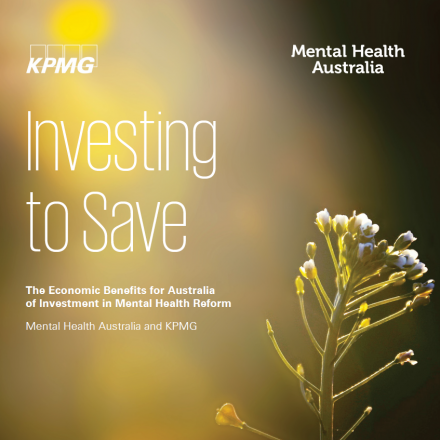Crisis line funding in crisis
 Article by Susan Murray, CEO Suicide Prevention Australia
Article by Susan Murray, CEO Suicide Prevention Australia
Did you know that there is no specific policy or program recognition of the place of crisis lines and crisis support services in the Australian national suicide prevention strategy?
There are also currently no national protocols, or state/territory arrangements, to establish linkages between crisis lines and crisis support services with mainstream hospital and health services, and with mental health professional services.
Yet, when asked in a News Poll survey which services adult Australians thought were available for suicidal persons, crisis support service Lifeline, was nominated by more than 29% of respondents unprompted, and 87% of respondents when prompted – far higher than GPs, psychologists and other professional services.
Demand for these services is increasing. Notably, calls to crisis lines from men has increased in recent years, according to a recent Melbourne University study which examined call data from beyondblue, Mensline, SANE and Lifeline.
At the same time, funding is not increasing and remains spread across various government agencies. These crisis support services must be acknowledged as essential, core suicide prevention infrastructure and funded at levels and with the continuity that will allow them to meet demand for services.
In the National Coalition for Suicide Prevention’s recent response to the first ever World Health Organisation (WHO) World Suicide Report, Australia’s performance in ‘Crisis intervention’ was marked as red. That is, Australia is performing poorly in this area with serious action planning required.
This is not to say that our crisis support services are performing poorly. It is exactly the opposite. In this country we have established crisis support services that provide free or low cost support via telephone or internet to individuals in crisis situations. We were early adopters of emerging technology, enabling services to be provided to geographically isolated communities. We also have partial integration of telephone helplines with national treatment initiatives (ATAPS Suicide Prevention Program).
The problem is that demand is outstripping supply to an alarming rate.
Lifeline Australia CEO Jane Hayden, said “Lifeline takes more than 60,000 telephone calls a month and about 2,500 contacts a month through its online crisis chat service. A special telephone service, which is promoted as a suicide ‘hot spots’, is taking almost 400 calls a month. And demand for these services is increasing.”
We know that research evidence on helplines suggests that they can be effective in attracting people seeking help, and especially those with mental health issues and suicidal ideation.
Emerging research evidence also suggests that telephone helplines can be very effective in putting people in touch with other services that can offer a longer term benefit: mental health treatment programs and clinical services. A recent study of the US National Suicide Prevention Lifeline showed that of those callers who were offered referrals, more than 50% took action post-call to access these referrals.
Some international research has considered the mere existence of crisis centres offering crisis support services in a community has a beneficial impact on suicide rates and mental health – possibly because of the creation of a compassionate outlet for people to seek help.
Interestingly, last year, a Social Return on Investment (SROI) forecast study for the Lifeline online crisis support chat found that from an annual investment of $860,517, for every dollar invested in the Lifeline Online Crisis Support Chat Service, there is a social return valued at $8.40.
It is clear that there is a vital place in the mental health system for helplines and crisis support services, both as supports to individual help seeking, and as mechanisms for creating pathways to access professional mental health services. They are surely part of the solution to the policy problem in Australia where an estimated two-thirds of adults experiencing mental health issues do not access services.
With stigma surrounding mental health issues still prevailing in Australian society, coupled with an increase in public awareness and help seeking campaigns, the ‘no names’ confidential access to service and the ease of the phone communication is attractive to many people when they are exploring the supports available to them. In the case of the online crisis chat, 30% of the contacts report when surveyed that they have not and do not intend to seek help from other services, preferring the online medium and the confidential access to support available from Lifeline services.
We are seeing excellence in suicide prevention throughout Australia particularly in the support services we offer in crisis intervention, as well as prevention and postvention. However, before we can develop and deliver national strategies to connect these efforts, build momentum and encourage creativity, we must ensure core services are sustained.
Communities must have the capacity to respond to crises with appropriate interventions and individuals need to know that they have access to emergency mental health care, including through telephone helplines and the internet. Crisis support for Australians must be funded as core national infrastructure in suicide prevention.
Their lives depend on it.
For more about what we need to do better in crisis intervention and broader assessment of Australia’s progress in suicide prevention download the National Coalition for Suicide Prevention’s Discussion Paper.
And what do the consumers – the callers and contacts – to the telephone helpline and crisis chat have to say about the Lifeline services?
“I wanted you to know that Lifeline has been like gold to me, where no one else has been, and I want to say thank you from the bottom of my heart.”
“Thank you very much for helping me. I was in a really agitated crisis situation and female [Telephone Crisis Supporter] TCS helped calmed me down. Thank you from the bottom of my heart.”
“I would not be alive today if not for the TCS I spoke with the other night.”
__________
Do you have a comment on this story? Join the conversation on Twitter @AUMentalHealth
Article contributed to the newsletter Perspectives - October 2014. Please note that this article is from an individual contributor and does not necessarily reflect the views of Mental Health Australia


 Article by Susan Murray,
Article by Susan Murray, 

